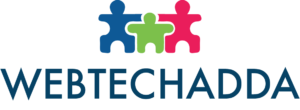A complete safety plan for WordPress websites which all the SEOs and developers will find easy to follow.
It may not surprise you that one-third of all the websites running on the web are based on WordPress. WordPress became the uncrowned prince of the World Wide Web, mainly due to the implementation of its SEO features. The thumping popularity of WordPress brought along the threat of continuous attacks by malware and hackers. In the following article, we will talk about the basic safety fundamentals, which the SEO professionals and developers can utilize to ensure the safety of their website.
Read more: Improve Your Website Rankings by Hiring an SEO Expert
How safe is WordPress?
The current version of WordPress is safer than the earlier ones. However, a delayed update can make things turn to the other side. This is the main reason why many cybersecurity experts are critical of WordPress. Keeping other things aside, a well-maintained WordPress site can easily shield itself from the potential attacks. Before moving forward with your WordPress theme customization, you must check the necessary updates.
How important are the updates?
Regularly updating your WordPress to the current version is the level one of your security steps. Apart from turning on the security auto-updates, you must make sure to update your plugins and themes so that they are well compatible with your new versions. Always remember that the updates are released to protect your website, and you should not ignore them. A team of developers and bug hunters are still engaged to better the product to make it safer and easy to use.
Read more: 10 Common SEO Mistakes You Should Avoid in 2020
Open-source: A Necessary Evil
WordPress being open source is a great relief for developers as they can contribute their code to the core community, and they, in turn, find security lapses and bugs. However, the open-source feature makes it easy for the ‘web-antagonists’ to figure out ways to open things up. They often use exploit applications to know what vulnerabilities are being tackled by which updates and what are the soft-corners of the code that are easier to target.
First things First: Protect your Network
It would help if you took some necessary precautions even when you are not in the administrator role. Make sure that your network is secure and that workstation that you are working upon is continuously scanned for any potential threats. Blocking ads and plugins from unknown sources is an essential way to protect yourself from any masquerading attacks. It would be best if you also used the Virtual Private Network (VPNs) for end-to-end encryption whenever you are using public hotspots for working as they are prone to session hijacks and MITM attacks.
Read more: Best SEO Tips for Content Writing
Password: Length & Strength
Secure management of passwords is equally important for all the roles. You should strictly follow the password basics related to the characters and length. There is no use of using alphanumeric and special characters combination if your password is not long enough. One good idea is to use phrases of four or five words strung together. If you hit ‘forgot password’ more enough, then it’s better to use a password manager who will generate unique passwords for you. You must be wondering why we are pressing so much on a general security feature. Well, an eight-character password can be cracked in less than three hours by using a simple open-source utility. As of now, a good length is 13+ characters, which is considered safe.
The Real Administrators Please Stand Up
If you are a website Administrator, then you should create a user profile which is limited to an editor role, and you should begin using that instead of the admin profile. Wondering why? Well, by doing that you will be able to dodge the attacks that will be directed towards the admin profile and trying to catch a hold of your editor role credentials. Even if they manage to get it, then you will always be able to change the password using the second editor profile which you made. In addition to it, make it compulsory for everyone to use strong passwords and follow the basic password privacy fundamentals.
Read more: Top 8 Best Killer Tips and Tricks to Remember While Writing on WordPress Blogs
Manage Permissions
If you are the one who controls the host, get yourself an SFTP account by using the control panel. It may lead to the undesired effect of configuring credentials to open an SSH window, which will enable you to perform additional security measures.
XSS AND SQL injection
When it comes to WordPress sites, XSS and SQL attacks are most dreaded. You can stop those attacks by using .htaccess query string rewrite rules. Specific security plugins can also be used to find out the compromise spots on your website. One such common security plugin is Wordfense, which gets updated regularly. If you want to use a more dependable option, then you may use the Sucuri Scanner, which is a paid service.
If you are going to hire a WordPress developer anytime soon, make sure he follows these security basics for your WordPress site.







